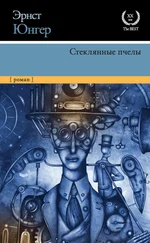Then had breakfast with Hanne Menzel, and Perpetua. An air-raid alarm put an end to this; it wasn’t long before squadrons appeared overhead in the brilliant blue sky while earth lay below under a blinding white blanket of snow. The new gun emplacements in Stelle began to fire. Soon the dome of the sky was flecked with little clouds. Waves of aircraft struggled through these from the direction of Grossburgwedel heading toward Misburg, where huge clouds of smoke soon billowed up. The two vapor trails that clung to the motors like short beards left an impression of concentrated power, of the intensified vortex in the wake of their energy. Above them, the fighters swirled like spirochetes dangling from an extended thread, making their wide circles and spirals; we could hear the planes’ own guns in combat. One of them crashed in smoke and flames over in the direction of Bothfeld. Sometimes I stood at the window; others, in the meadow in order to commit each and every impression to memory, like someone busily taking a series of photographs.
KIRCHHORST, 1 JANUARY 1945
Spent New Year’s Eve with Perpetua, Hanne Menzel, Fritzi Schultz, and Hilde Schoor. A speech by Kniébolo launched the new year, a speech manacled by the spirit of hatred and Cainite vision. This descent into ever-darker regions is horrifying—it is a meteoric plunge from the sphere of salvation. Destruction must inevitably grow from these chasms and fire spew forth from them.
New Year’s meditation: We are approaching the innermost vortex of the maelstrom, almost certain death. I must prepare myself, steel myself inwardly to step across into the other, shining side of existence, and not as a captive under duress, but with inner affirmation and calm anticipation at that dark gate. My baggage, my treasures, I shall have to leave behind without regret. After all, they are valuable only to the extent that they have an intrinsic connection to the other side. The mass of manuscripts, the work of my mature years—I must become accustomed to the thought of seeing them go up in flames. Then all that will remain will not be what I thought and wrote for human beings: the core of authorship. This will be held in abeyance for the long trek beyond the realm of time. The same applies to the people and things I will be leaving behind. The real and divine aspect of my connection to them is the plane on which I loved them. The most fervent embrace is only the symbol, the metaphor for this inseparability. There we shall be united in the eternal womb, and our eye will no longer be sensitive to light, because it will exist in light itself forever.
The new year began with blue skies and sunshine. But soon enough, these skies were swarming with squadrons performing complex maneuvers while coming under heavy shelling. We could see some of the shots that hung in the air as incendiary puffs. Our house was right on their straight flight path—the formations seemed to chart their deadly course above us. Somewhere near Schillerslage, one of the jagged smoke signals was released and trailed downward from above almost to the earth. In the intervals, there came the terrible drumroll of the barrage, giving the impression that it creates zones of destruction everywhere, places where life can no longer exist. The target must be the town of Dollbergen, an oil transport point.
Aircraft also overhead in the evening, with red Christmas trees.
Léon Bloy, Lamentation de l’Epée [ Lamentation of the Sword ], which appeared in October 1890 in La Plume [ The Pen ]. The sword expresses its disgust with modern man who is no longer worthy to bear the weapon. It threatens to transform itself into its ancient form, into that of the sword of flame that will eradicate the whole human race.
Motto for a blackout curtain: “ S’ils on éteint le jour, qui’ils soient éclairés de la foudre ” (Michelet).
[If they have extinguished the day, let them be illuminated by the lightning bolt.]
One can certainly say, “God’s hand,” but not “God’s fist.”
KIRCHHORST, 4 JANUARY 1945
Current reading: Baader, who is difficult for me. As with everything in the tradition of Böhme, individual images really stand out, such as when he speaks of the advantage of mechanical prayer. He compares devotion arrived at by this method to the pressure applied by the cabinetmaker who forces two warped boards together until the glue has joined them.
I would like to say that, through mechanical prayer, a vacuum, a lacuna arises in the causality of one’s daily routine that invites higher influence. In our modern age, this makes our decision to adhere to a credo less pointless than one might imagine, even if the inner calling is absent. Actually, it gives one the best opening moves in the metaphysical match. It is up to God to follow with a counter move. On this, see Matthew 7:7–11.
The passage is also revealing because it contrasts the fish as the goal and the gift of prayer with the earthbound creature, the serpent. Christ never comes up with such imagery by chance. Instead, He reaches deep into the foundations of the world order.
KIRCHHORST, 5 JANUARY 1945
Went to Burgdorf in the morning because of the Civil Defense Unit I am supposed to take over. Our situation is such that desperation is its only positive aspect. This directs intelligent people to seek shelter in their inner and authentic fortresses. Rescue is now possible only if intervention comes from a different dimension.
In the afternoon, I took Hanne Menzel to the station. Thick formations of aircraft overhead in the evening. In the air-raid shelter. From our attic window I watch the city seethe under the bombardment. The yellow umbrellas of fire from the formation bombing [35] E. J. refers to payloads ( Kettenwurf ) dropped from aircraft flying in wedge formations, called the Keil (wedge) or Kette (chain).
rose over the moor.
As I sit here in the quiet room that is under strict blackout conditions, the monotonous voice of the radio announcer again issues from the instrument.
“Numerous aircraft are approaching the district capital from the region of Steinhuder Meer. Air defensive action is urgently required.”
My God, who could have thought of such scenes in 1911? It eclipses any science fiction novel.
At ten o’clock a new, even heavier incendiary attack. The explosions were so powerful that objects inside the house fell over.
Read further in Leviticus. Anyone who sees merely hygienic intentions behind the ritual commands of the old lawmakers is like someone who interprets the streets and squares of a metropolis simply in terms of airflow management. That is also correct, but only up to a point. The issue here is not one’s physical hygiene, but rather one’s optimal conduct, including the hygienic optimum—the condition of sanctity that exalts and elevates one’s natural state of health. As a holy thing this even approaches immortality—see those passages where Moses’s face is “radiant” and thus unbearable to human eyes.
In this context, see Walter F. Otto, Dionysos , a work that is part of my reading these days. The introduction contains good insight into our theological situation: “The basic character of ritual acts does not derive from the fact that those who first performed them wished to invoke something they yearned for, but from the fact that they already possessed what they yearned for: nearness to their God.”
It can be assumed that the Israelites tried to expunge any residual traces of the Egyptians during their exodus. A tangible example of this is the stoning of the son of Shelomith (Leviticus 24:10–16).
KIRCHHORST, 6 JANUARY 1945
Friend Speidel sent word from Freudenstadt that he is out of prison. His letter, dated Christmas Eve, was one of those rare pieces of happy news. I have thought of him every day with great intensity. On the other hand, still no word from Ernstel. That millions of people long to receive letters is a mark of this nightmarish world.
Читать дальше

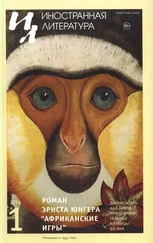

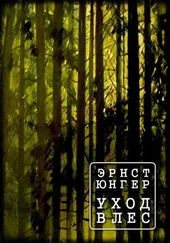



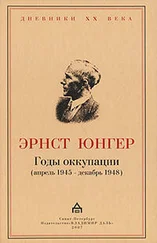
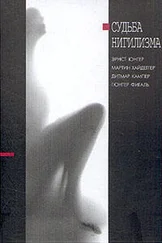
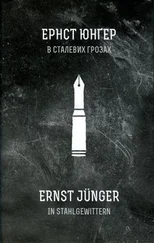
![Эрнст Юнгер - Стеклянные пчелы [litres]](/books/410842/ernst-yunger-steklyannye-pchely-litres-thumb.webp)
